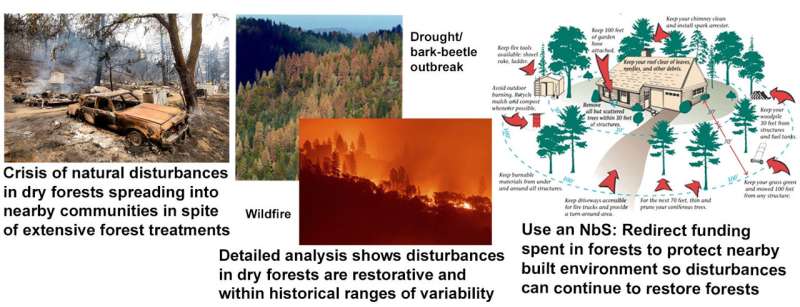 Nature effectively “managed” forests through millennia of major climate changes and episodes of natural disturbances (e.g., wildfires, droughts, bark-beetle outbreaks), so why would nature not now be best able to restore and adapt forests to climate change? We focused on this question while investigating lower-elevation dry forests of the western U.S. dominated by ponderosa pine (Pinus ponderosa) or similar pines and dry mixed-conifer forests, in addition to other trees. Dry forests cover 25.5 million ha (63 million acres) of the western U.S. These forests have altered structure (e.g., tree density) from extensive logging, livestock grazing, and fire suppression. Dry forests are also recently experiencing more natural disturbances. Wildfires have at times become almost unstoppable, overwhelming firefighters and spilling over into the built environment. These trends continue in spite of billions of dollars spent annually to reduce fuels (e.g., thinning) and suppress fires and other disturbances in federal forests.
Nature effectively “managed” forests through millennia of major climate changes and episodes of natural disturbances (e.g., wildfires, droughts, bark-beetle outbreaks), so why would nature not now be best able to restore and adapt forests to climate change? We focused on this question while investigating lower-elevation dry forests of the western U.S. dominated by ponderosa pine (Pinus ponderosa) or similar pines and dry mixed-conifer forests, in addition to other trees. Dry forests cover 25.5 million ha (63 million acres) of the western U.S. These forests have altered structure (e.g., tree density) from extensive logging, livestock grazing, and fire suppression. Dry forests are also recently experiencing more natural disturbances. Wildfires have at times become almost unstoppable, overwhelming firefighters and spilling over into the built environment. These trends continue in spite of billions of dollars spent annually to reduce fuels (e.g., thinning) and suppress fires and other disturbances in federal forests.